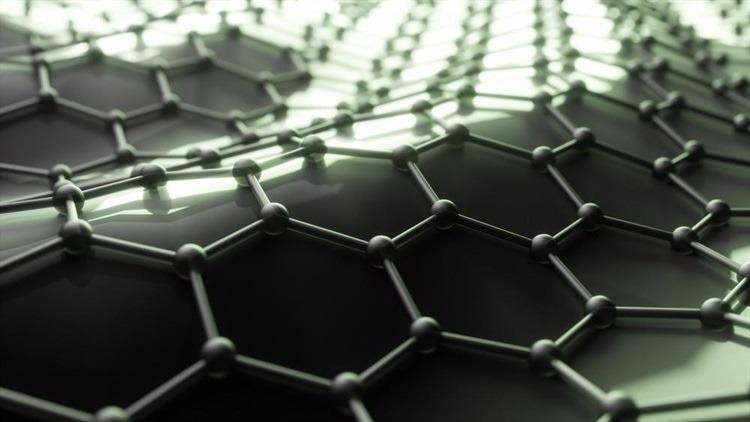Two-dimensional transition metal dichalcogenides (TMDs) are a new family of 2D materials with features that make them appealing for applications spanning from nanoelectronics and nanophotonics to nanosensing. This article discusses this class of materials and recent advancements in developing 2D TMDs.

Image Credit: OliveTree/Shutterstock.com
Introduction to Transition metal dichalcogenides (TMDs)
While graphene is extremely famous due to its numerous intriguing features, its lack of an electronic band gap (material with a zero-band gap) has driven the quest for two-dimensional materials with semiconducting capabilities.
Transition metal dichalcogenides (TMDs) can display a wide range of electronic properties from insulating to metallic depending on chemical composition and structural phase. They are noted by MX2, in which M is a transition metal atom (such as Mn, Mo, Cr, Ti, V, Zr, Nb, Tc, Ta, Hf, W, or Re) and X is a chalcogen atom (such as Se, S, or Se), and represent an intriguing alternative to graphene.
Properties of TMDs
Like graphite, 2D TMDs are made up of monolayers held together by Van der Waals attraction. The ultrathin structure (~0.6-0.7 nm) and the high surface-area-to-mass ratio of 2D TMDs make them ideal for loading numerous biomolecules.
Bulk TMDs have an indirect gap, but in a monolayer state, the gap becomes direct. MoSe2, MoS2, WSe2, WS2 and MoTe2 monolayers have a direct band gap and electron mobilities equivalent to those of silicon, which enables their usage in the fabrication of transistors.
TMD has the ability to absorb up to 20% of incident light in a single layer. As a result, TMDs monolayers appear to be attractive materials for optoelectronics. 2D TMDs with a high photothermal conversion coefficient show promise in photothermal therapy and biomedical imaging.
Due to high spin-orbit interactions and the lack of inversion symmetry at their ultimate atomic thickness, TMDs have received attention in "Valleytronics," a new branch of physics.
The researchers discovered that monolayer MoS2 had a Young's modulus of 270GPa when subjected to a maximum experienced strain of 10% before breaking.
The State of Art: Synthesis of TMDs
High-quality TMD monolayers can be synthesized through micromechanical cleavage utilizing scotch tape adhesive force, like graphene. However, the production rate is limited, and controlling the thickness and size is difficult. Chemical exfoliation has been used to produce ultrathin 2D TMDs without the use of harmful organic solvents.
Another method for synthesizing transition-metal dichalcogenides is chemical vapor deposition (CVD). CVD growth of TMDs is commonly accomplished by heating reaction precursors such as transition metal oxide and pure chalcogen in a furnace.
To generate ultrathin 2D TMDs, the reaction precursor is exposed to the substrate at high temperatures and pressures. This approach produces ultrathin 2D TMDs nanosheets with exceptional electronic properties and crystal purity.
Recent development Towards TMDs Applications
With the rapid advancement of preparation methods in recent years, 2D TMDs have shown great potential in fields such as biomedicine, electronics, optoelectronics, water purification, and many others.
Solar energy, for example, is the most readily available and least expensive form of light energy. Solar disinfection of drinking water is mostly based on ultraviolet solar radiation, which accounts for only 4% of total solar energy, resulting in low solar disinfection efficiency.
Scientists have demonstrated that by absorbing 50% of solar light, a few-layered MoS2 membrane produces reactive oxygen species (ROS) and kills bacteria in water.
2D TMDs, such as MoS2 nanosheets, have a high drug loading percent for chemotherapeutic medicines due to their extremely high surface-area-to-mass ratio.
Two-dimensional TMDs have a lot of potential for being effective gene carriers. Furthermore, 2D TMDs have been employed as photothermal agents in photothermal therapy. Here, they have been effective in eliminating cancer cells in vivo due to their strong light absorption capabilities in the near-infrared range.
When semiconducting TMDs like WS2, WSe2, and MoS2, are thinned to a single layer, the electrical structure changes from an indirect to a direct band gap. The discovery of a direct band gap sparked interest in next-generation electrical and optoelectronic devices.
TMDs can be modified to form a semiconductor, a metal, or a superconductor, as well as a material with different magnetic properties, such as a ferromagnet, an antiferromagnet, or a paramagnet.
Future Perspective and Challenges
As improved synthesis methods are now being developed in the laboratory, we can expect 2D TMDs to find practical applications to transform electronics, optoelectronics, and energy technologies.
The advancement of synthesis and modification procedures has facilitated the widespread use of 2D TMDs in a variety of sectors.
Two-dimensional TMDs might enter the human respiratory system as airborne particles during the manufacturing or disposal of 2D TMDs-based products. As a result, the biosafety of 2D TMDs must be assessed.
Continue reading: How are MXene Nanomaterials Synthesized?
References and Further Reading
Zhou, X., Sun, H. & Bai, X., (2020) Two-dimensional transition metal dichalcogenides: Synthesis, biomedical applications and Biosafety Evaluation. Frontiers in Bioengineering and Biotechnology, 8. Available at: https://www.frontiersin.org/articles/10.3389/fbioe.2020.00236/full
Lv, R. et al., (2015) Two-dimensional transition metal dichalcogenides: Clusters, ribbons, sheets and more. Nano Today, 10(5), pp.559–592. Available at: https://www.sciencedirect.com/science/article/pii/S1748013215000961
Disclaimer: The views expressed here are those of the author expressed in their private capacity and do not necessarily represent the views of AZoM.com Limited T/A AZoNetwork the owner and operator of this website. This disclaimer forms part of the Terms and conditions of use of this website.